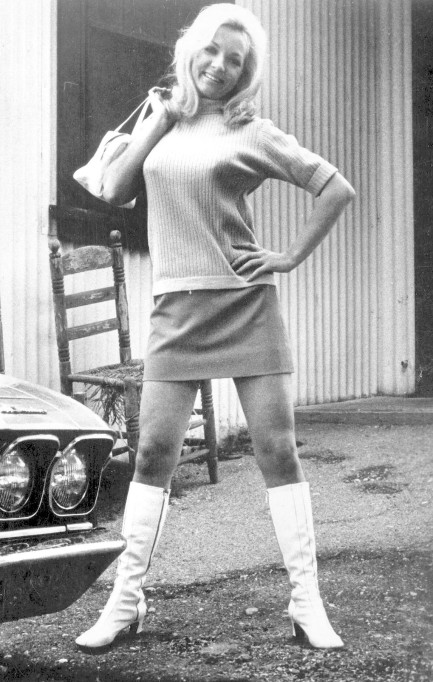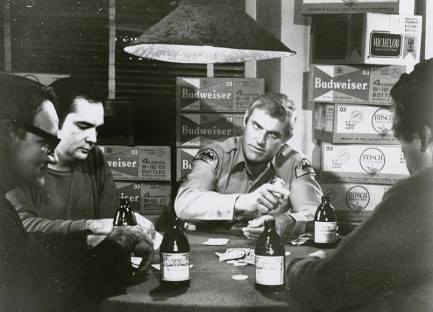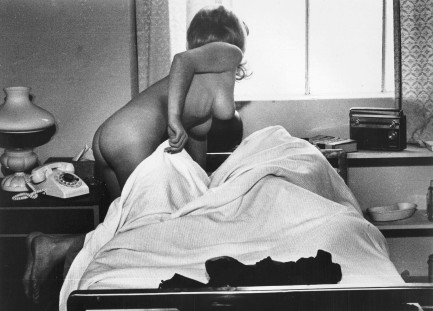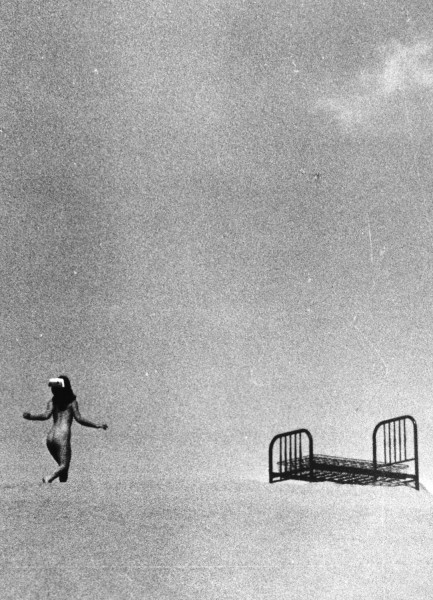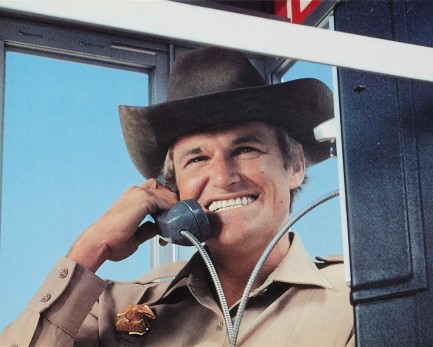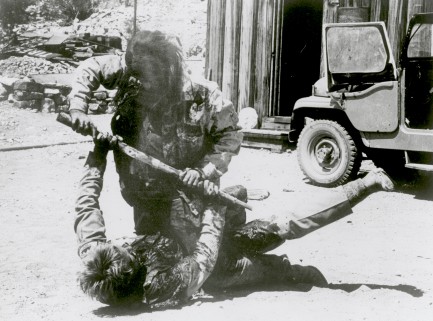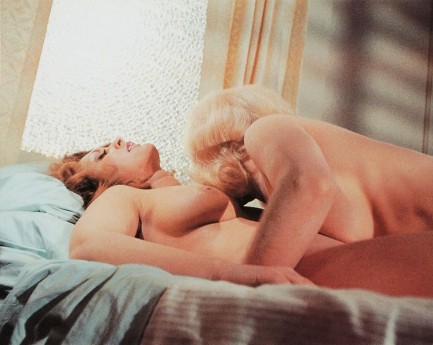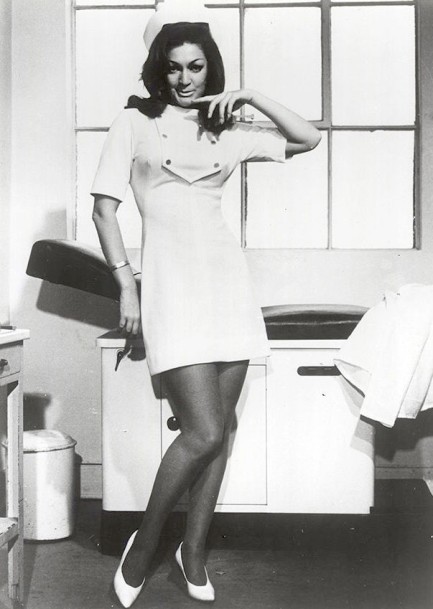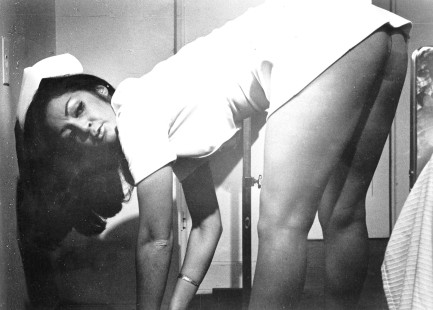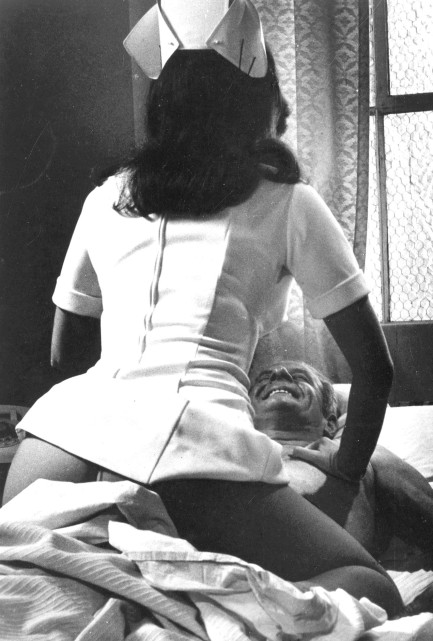 I got shit here that'll blow your minds. Dented saucepans, frayed towels, old keys. I'm talking grade-a junk. 
Robert W. Taylor's 1954 novel The Junk Pusher is one of numerous mid-century drug scare books. Many of them deal in an unintentionally hilarious way with marijuana. This one, though, is about heroin, and we think Taylor is on safe ground here in saying it can be very dangerous. The cover art is by Frank Cozzarelli, who we've seen around these parts before. Check here.
 You’re nobody ’til somebody loves you. 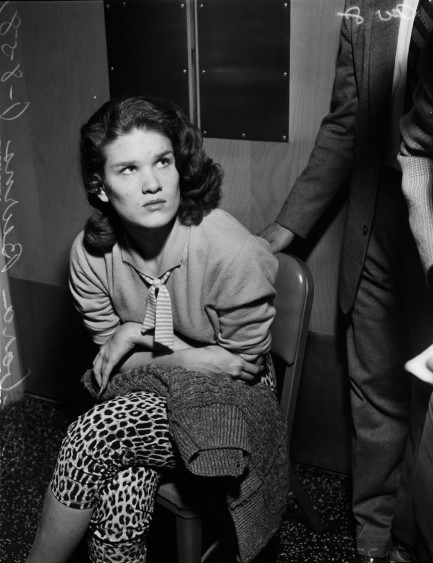 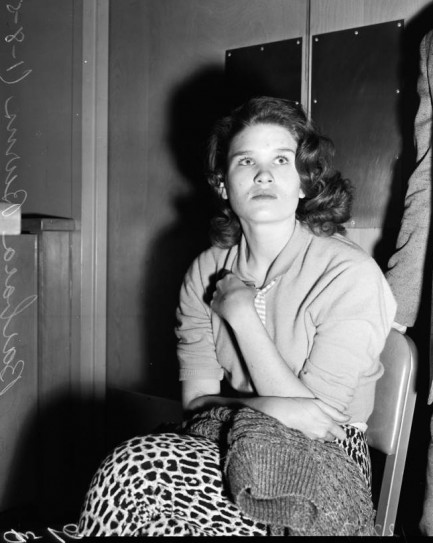
The above photos show Barbara Burns when she was busted for drugs today in 1958 after LAPD officers found track marks on her arms. Burns was the well-to-do daughter of famed comedian Bob Burns, but her father had died of kidney cancer in 1956. Barbara Burns was sentenced to probation after the arrest, and the story got some play in national newspapers, with several calling her probation sentence a storybook opportunity at a second chance. But she didn’t cooperate in the role. She managed to cobble together some behind-the-cameras television work, but was arrested for heroin possession in 1959. That time she served ninety days in jail and admitted in an interview, “I’m really hooked. I had nothing else to do, and my mother wouldn’t talk to me. I wanted to be a singer but I was too heavy and they told me it would help me lose weight.” Burns had always called herself an ugly duckling, compared herself unfavorably to her siblings, and felt she could never live up to family expectations. But even though her own words told the world that low self esteem was the root of her problems, a dead father and an estrangement from her mother probably didn't help things. The downward spiral continued. She was arrested for marijuana possession in early 1960 and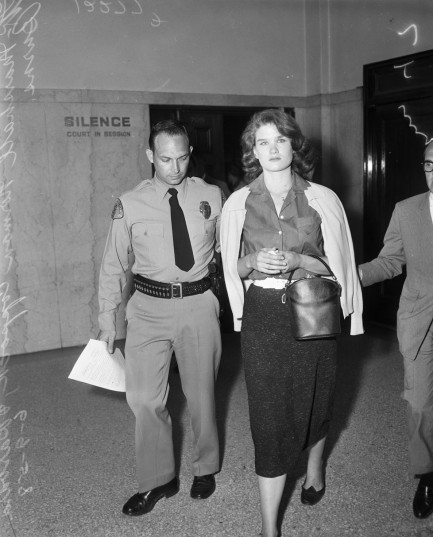 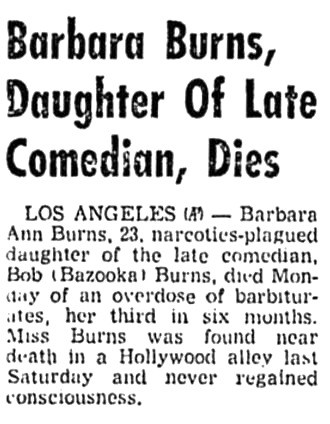 earned ninety days in Camarillo State Hospital. In November 1960 she was snared in another weed bust, but that time she walked after a jury acquitted her. When she was arrested for heroin possession again in June 1961, she lamented what had probably been true for longer than she admitted—that she had doomed her chance to have a career in show business. earned ninety days in Camarillo State Hospital. In November 1960 she was snared in another weed bust, but that time she walked after a jury acquitted her. When she was arrested for heroin possession again in June 1961, she lamented what had probably been true for longer than she admitted—that she had doomed her chance to have a career in show business.
At some point she sought medical treatment for an eye problem and was told by a doctor that she was losing her vision in her right eye. In both August and September of 1961 she attempted suicide, and in January 1962 while awaiting trial on one of her narcotics busts she was found overdosed and unconscious on a Hollywood street, and died a few days later in the hospital. Her suicide note said all she wanted was to be loved but everyone hated her. Many of her obituaries, ironically, described her as “tall and beautiful,” which she certainly would not have believed. They also noted her advantages in life—how she had won the crucial lottery of being born to wealth. But Barbara Burns didn’t see it that way. She once said, “I wish I had been born in some poor, obscure family that nobody knew. Then maybe I would have tried to become somebody.”
 Diamonds are forever, but Connery wasn’t. 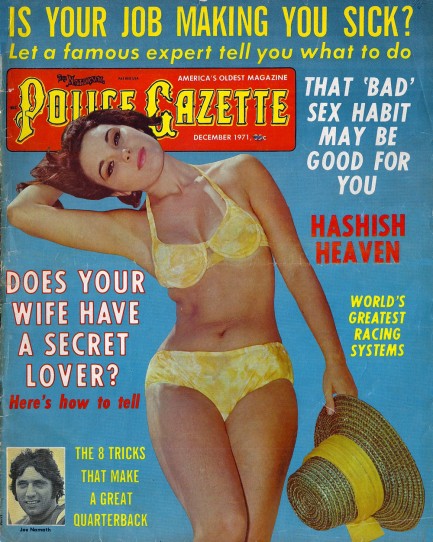
Sean Connery made as many appearances in sixties and seventies tabloids as just about any celeb of his time period, so here he is again in an article promoting his role in Diamonds Are Forever, which would premiere just a couple of weeks after this December 1971 National Police Gazette hit newsstands. we talked a bit about the source novel for the film, and author Ian Fleming's troubles with his publishers. It's interesting, so check here if you wish. In Gazette, Connery speaks of his futile struggle to portray James Bond as a balding hero, and quips about making his stylist thin his wigs so there was almost no point in wearing them at all. Connery said about Bond’s aging, “No one is immortal—not me, not you, and not James Bond.” It was a commendable sentiment, but naïve. Seems as though Connery didn’t realize United Artists had already branded Bond well beyond the point where the character was tethered to any concept of aging. The studio proved that when it brought the much younger Roger Moore on the scene for 1973’s Live and Let Die. Moore would later give way to Dalton, who gave way to Brosnan, who gave way to Craig, as Bond himself remained eternally forty-ish through the passing years. Elsewhere in the Gazette you get a report on the hash capital of the world, the world’s greatest racing systems, and the usual assortment of random beauties in bathing suits. All that, plus hashish toasted cheese, below.
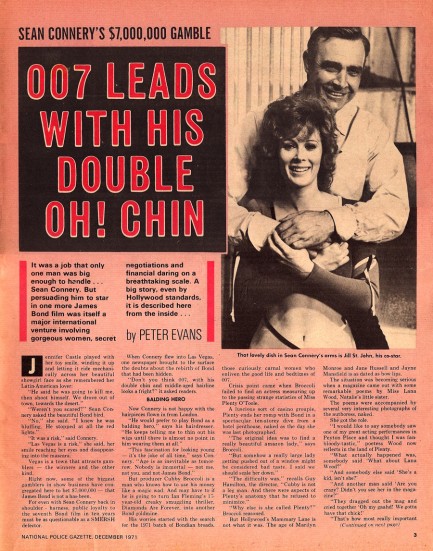 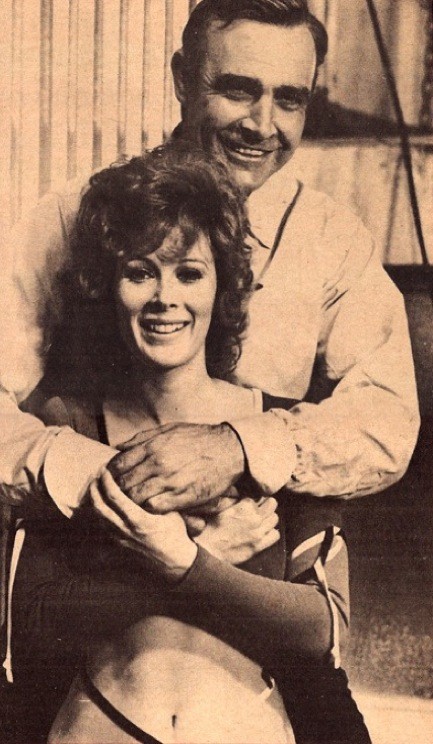 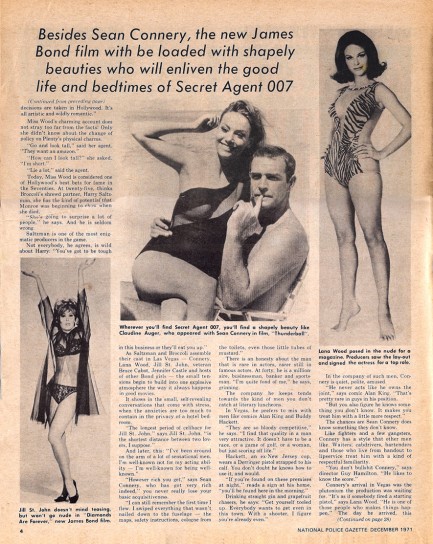 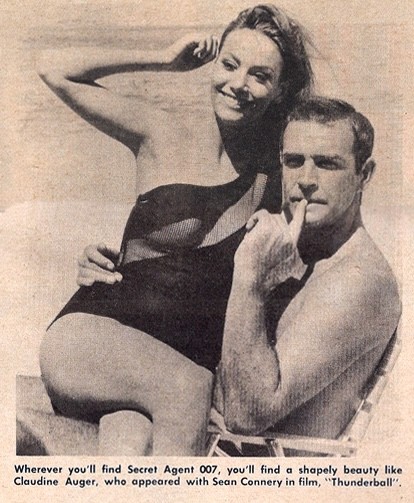 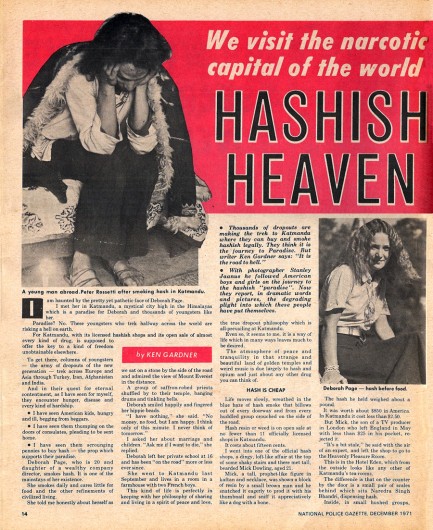   
 Russ Meyer and Co. do it in the desert. 
Above is a Japanese poster made for Cherry, Harry & Raquel, on which the local distributors splash that magical English word “Sex.” Twice we've discussed this practice and shared examples, here and here. The movie is one of numerous exploitation efforts from Russ Meyer, who graced American grindhouse cinemas with such dubious classics as Wild Gals of the Naked West, Motorpsycho!, Mondo Topless, Beyond the Valley of the Dolls, and Faster, Pussycat! Kill! Kill!
Cherry, Harry & Raquel deals with a bordertown sheriff and his sidekick who smuggle marijuana, and are instructed by their drug boss to kill a former partner who's gone into business on his own. The hunt-and-kill operation goes wrong, as the prey quickly becomes the predator. In Meyer's hands the film is something of a desertified hallucinogenic short, intercut with random scenes of nudity and seduction to stretch it to feature length. The sexual content is mostly played for laughs, and none of it is erotic. At least as far as we were concerned.
It was the poster and Meyer's name that drew us, and we were also a bit curious to check out b-movie legend Charles Napier in one of his earliest roles, but none of what we saw impressed us. When Meyer was on his game his movies could be entertaining. Faster Pussycat and Valley of the Dolls are both worth a watch just for their self-conscious silliness. But unless you're a Meyer completist, we recommend skipping Cherry, Harry & Raquel. It opened in the U.S. in 1969, and eventually reached Japan today in 1976.
 And now, gentlemen, if you'll excuse me, I'm overdue for a flight on Wacky Backy Airlines. 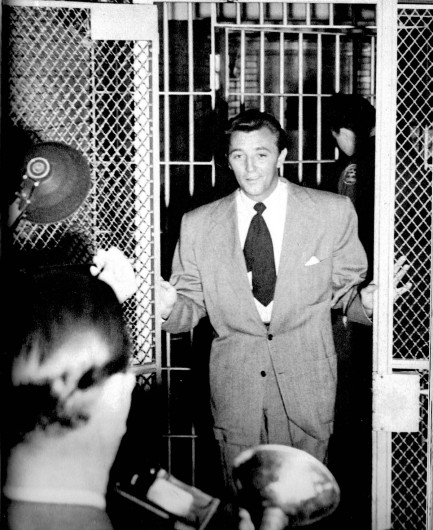 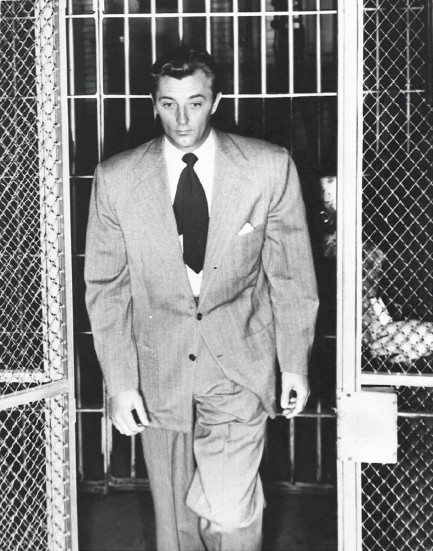 
In Hollywood, everything is a photo op—even one's own embarrassing release from the stifling clutches of state confinement. Above you see a progression of three press photos made today in 1949, featuring famed stoner Robert Mitchum being freed from the lock-up after his marijuana conviction. Mitchum makes the most of the moment, looking dapper and unruffled despite PTSD over some terrifying episodes in the prison laundry and a few narrow escapes from damage to that pretty face of his. Actually, we have no idea what he went through. We suspect it was reasonably untroubled, but probably only Mitch and his ganja dealer ever knew the truth.
These shots are a follow-up to our look at Mitchum going into jail on February 9. He was supposed to serve sixty days, but earned an early release for good behavior and unshakable cool. We don't know if an early release was also granted to... to... we've forgotten her name—that chick he got caught smoking with who was sent to jail the same day. Anyway, just look at ole Never-Let-Em-See-Ya-Sweat. Doesn't he look great? The hair. The perfectly tailored suit. The roguish gleam in his eye that says he's going to get miiiiiiiles high as soon as he gets home. You know what we love about Mitch? Nothing could keep him down for long.
 This is your cell, Mitchum. You'll survive fine. Miss Leeds, yours is in the other wing and I'm sorry to say it's the last anyone'll ever hear of you. 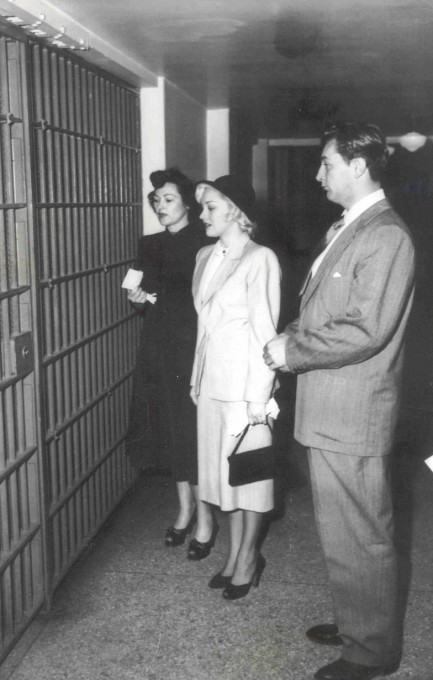
In this press photo, a Los Angeles police deputy named Marjorie Kellog, in black, escorts Lila Leeds and Robert Mitchum to jail after their sentencing for marijuana related charges today in 1949. They'd been arrested the previous August after a police sting operation and been sentenced to a year behind bars, but the judge suspended the sentence and gave them two years probation, sixty days of which were to take place in Los Angeles County Jail. Mitchum had fretted that his acting career was over, but he emerged from his stint in lock-up more popular than ever, and law enforcement axe grinders learned an important lesson—arresting stars in hopes of ruining their careers risked making them appealing as rebels.
Leeds, however, wasn't a star. She was a fledgeling actress who'd accumulated nine film appearances, six of them uncredited. It's possible to argue that, had she been a big star her career would have been severely damaged because she was a woman. But on the other hand Lana Turner went through the scandal of her daughter's killing of Johnny Stompanato, was exposed as a mobster's mistress, yet her subsequent movie was one of her biggest hits. But Turner was seen by the public as someone led astray by a bad man. So in the end it's difficult to say if Leeds got a raw deal because she was a woman. Probably. It's usually a safe bet. We can only say for sure that with no earnings record and no power, her dreams of stardom died.
 Just a D.O.G. going about his J.O.B. 
Those of us in fat, modern societies tend to forget that hunger is probably the number one behavioral driver inscribed in our genes. It need not be said that this especially goes for animals. To a domesticated dog humans are a good provider of meals, but to a wild dog that's hungry, a human—once he stops moving around, throwing rocks at you, and yelling weird mouth noises at you—becomes the meal. That's sometimes the case even with domesticated dogs, under specific circumstances. Pet dogs trapped with dead owners in houses, apartments, or even sometimes in the woods, start chewing on master's face when they eventually get hungry.
This week in Zacatecas, Mexico a cartel related gang killing led to the grisly sight of a dog trotting down a local street with a severed human head in its mouth. A bystander filmed the animal as it was busily taking care of job one: discreetly get the head somewhere quiet and safe to enjoy in peace. A dog carrying a head presents an awkward mental image, so we thoughtfully provided the camera phone screen grab above. It's low-rez, but as you can see (and never unsee) the dog carried its intended meal upside down by a chunk of handy neck flesh, easy as pie. Dogs are MacGyverish when they need to be. Years ago we were at a barbecue when one jumped on a picnic table, grabbed a pot of pork and beans by the handle, and fled into the nearby trees.
This decapitated head story caught our eye not just because it's unusual, but because PSGP has a history with wild dogs. There was a pack that terrorized the somewhat isolated barrio where he lived in Guatemala, and their aggressive behavior was a problem. They surrounded him more than once. But he was sympathetic to their difficult lives, so he gave them a massive pig's head to eat. He cooked it especially for them, though he admits he didn't season it. Bland or not, he and the dogs subsequently reached good terms, and remained that way. The point is, since he's seen a dog carry a head, this Zacatecas story resonated.
It's important to note at this point that while dogs will eat humans—in part, or given the chance, in whole—that doesn't mean it's a preferred or easy decision. The Zacatecas dog was surely wondering, “Am I still a good boy?” And the answer he probably came up with was, “Let me eat first, have a good scrotal lick and a nap, and I'll get back to that perplexing conundrum later, assuming I remember to do that.” Unfortunately, he never got the chance, as he was relieved of the head by some human killjoys. He'll get another opportunity, though. The cartel wars always provide.
 As far as I'm concerned whoever let the cops in should pay all our legal fees. 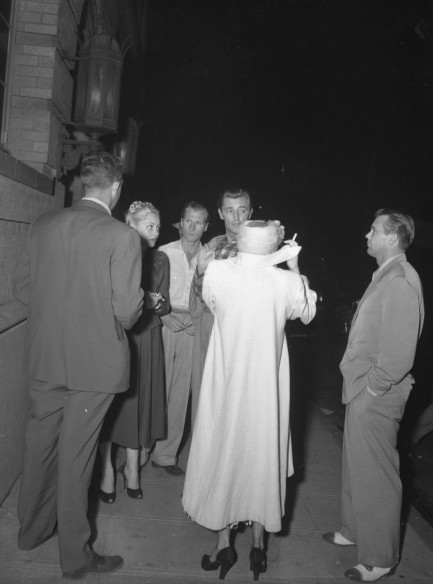
On this day in 1949, during the wee small hours of the morning, Robert Mitchum, Lila Leeds, Robin Ford, and Vickie Evans were hanging in a secluded Hollywood Hills home smoking a little mota when there was a scratch at the door. The house was the residence of Leeds and Evans, and it had become a spot where people, including Hollywood showbiz types, occasionally partook of the Devil's weed. By some accounts entry could be gained only via a secret knock, which—actually this is pretty clever—was to scratch at the front door like a cat. Since police had been tipped to the house's possible purpose, we can assume they too scratched at the door. We like to think they meowed too, but that probably didn't happen.
Anyway, Evans answered the door, and to her shock and dismay, in barged the police. Evans, Leeds, Mitchum, and Ford were corralled and escorted to the police station—and right into the cameras of the waiting press. The quartet are seen above with their legal representatives. Below, Mitchum, Leeds, and Ford are facing the camera, while Evans is facing away. Mitchum actually thought his career was ruined, but after being convicted of conspiracy to possess marijuana and serving sixty days in jail he continued as a top rank star. The up and coming Leeds, on the other hand, really was ruined by her conviction—at least according to her. Ford, who was a realtor, was also convicted, but we have no idea what happened to him afterward. Only aspiring dancer Evans was acquitted.
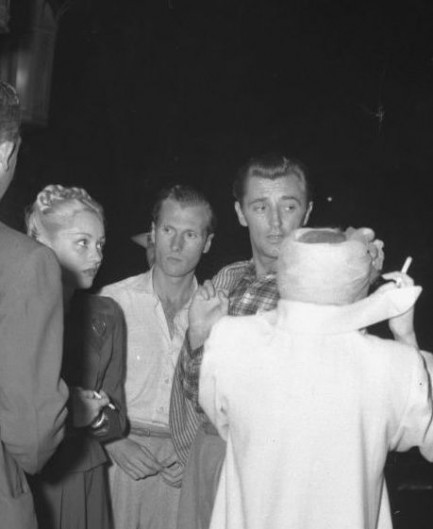
 Is this where I get legal medicinal weed? Great. I need eighty kilos. For my glaucoma. 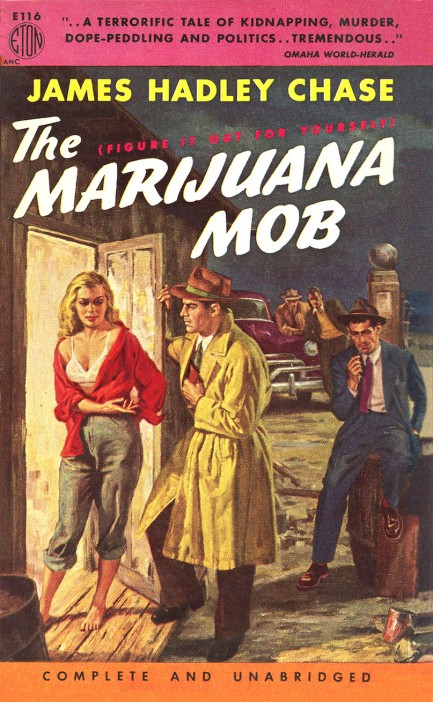
The Marijuana Mob, originally published as Figure It Out for Yourself, is another Orchid City caper from James Hadley Chase starring franchise tough guy Vic Malloy, his sidekick Kerman, and of course Paula Bensinger, his girl Friday—because you're not a real detective until you have a sizzling hot office assistant who reluctantly plays the spinster while you romance femmes fatales. Malloy runs a fixer agency called Universal Services, and this time the gig is to help a society woman pay a kidnapping ransom. Secondarily, he also tries to extricate a gambler acquaintance from a frame for murder. Drug dealers do feature prominently in the plot, but there are also many other layers and players. This tale isn't quite on the level of You're Lonely When You're Dead, in our opinion, but it's colorful and surprising. 1952 copyright, with art by Victor Olson.
 Some people just can't say no. 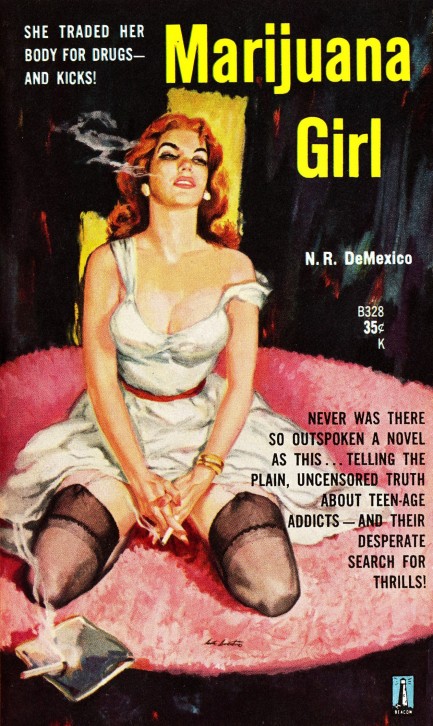
Above is an alternate cover for N.R. de Mexico's classic drug sleaze novel Marijuana Girl, a surprisingly good tale of addiction and redemption we wrote about last year. That edition was from Uni Books and had a photo cover. This Beacon edition has a nice painted cover, which is signed but illegible. Have any idea whose signature this is below? Drop us a line.

|
 |

The headlines that mattered yesteryear.
1945—Churchill Given the Sack
In spite of admiring Winston Churchill as a great wartime leader, Britons elect
Clement Attlee the nation's new prime minister in a sweeping victory for the Labour Party over the Conservatives. 1952—Evita Peron Dies
Eva Duarte de Peron, aka Evita, wife of the president of the Argentine Republic, dies from cancer at age 33. Evita had brought the working classes into a position of political power never witnessed before, but was hated by the nation's powerful military class. She is lain to rest in Milan, Italy in a secret grave under a nun's name, but is eventually returned to Argentina for reburial beside her husband in 1974. 1943—Mussolini Calls It Quits
Italian dictator Benito Mussolini steps down as head of the armed forces and the government. It soon becomes clear that Il Duce did not relinquish power voluntarily, but was forced to resign after former Fascist colleagues turned against him. He is later installed by Germany as leader of the Italian Social Republic in the north of the country, but is killed by partisans in 1945. 1915—Ship Capsizes on Lake Michigan
During an outing arranged by Western Electric Co. for its employees and their families, the passenger ship Eastland capsizes in Lake Michigan due to unequal weight distribution. 844 people die, including all the members of 22 different families. 1980—Peter Sellers Dies
British movie star Peter Sellers, whose roles in Dr. Strangelove, Being There and the Pink Panther films established him as the greatest comedic actor of his generation, dies of a heart attack at age fifty-four.
|

|
|

It's easy. We have an uploader that makes it a snap. Use it to submit your art, text, header, and subhead. Your post can be funny, serious, or anything in between, as long as it's vintage pulp. You'll get a byline and experience the fleeting pride of free authorship. We'll edit your post for typos, but the rest is up to you. Click here to give us your best shot.

|
|






 earned ninety days in Camarillo State Hospital. In November 1960 she was snared in another weed bust, but that time she walked after a jury acquitted her. When she was arrested for heroin possession again in June 1961, she lamented what had probably been true for longer than she admitted—that she had doomed her chance to have a career in show business.
earned ninety days in Camarillo State Hospital. In November 1960 she was snared in another weed bust, but that time she walked after a jury acquitted her. When she was arrested for heroin possession again in June 1961, she lamented what had probably been true for longer than she admitted—that she had doomed her chance to have a career in show business.











